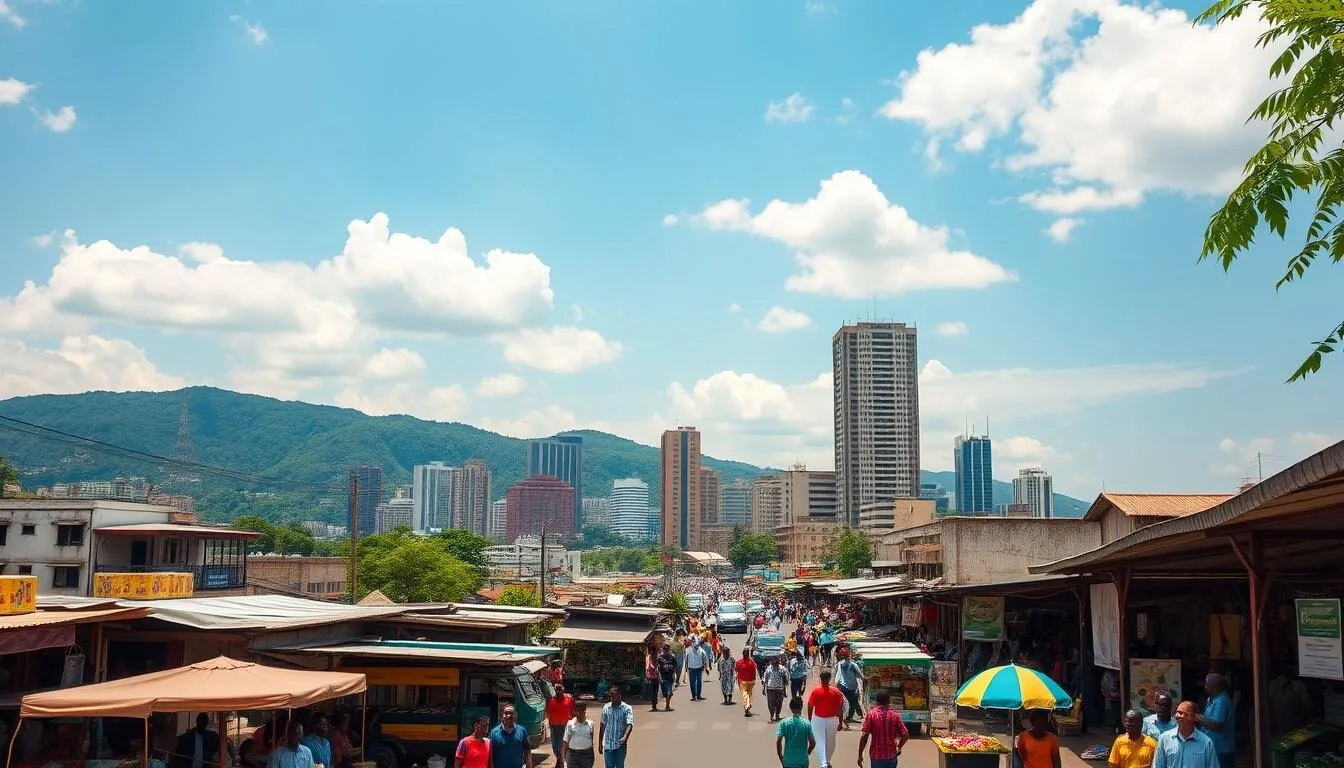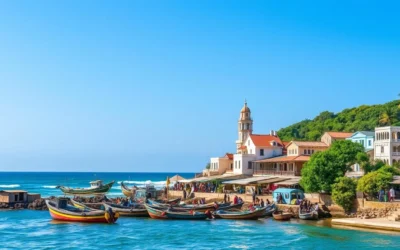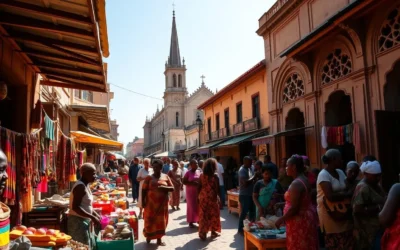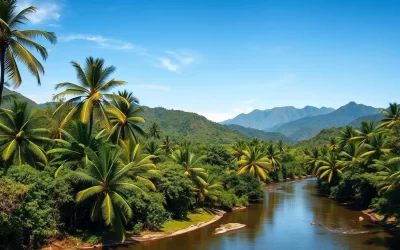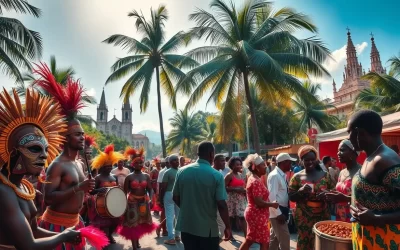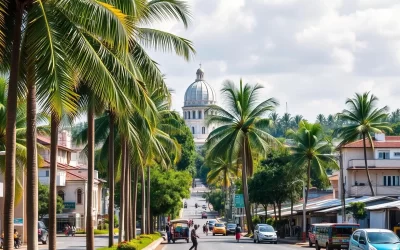✓ Accommodations ✓ Flights ✓ Rental Cars
Before the 2020 pandemic, Côte d’Ivoire welcomed over 2 million visitors, showcasing its growing appeal as a tourist destination in West Africa. Located on the shores of the Gulf of Guinea, this fascinating country boasts breathtaking natural scenery, rich cultural heritage, and pristine shores, offering something for every kind of traveler.
As you explore Abidjan, the economic hub of Côte d’Ivoire, you’ll discover a unique blend of modern city life and rich cultural heritage. This city, often referred to as the “Paris of West Africa,” offers countless attractions, from impressive landmarks to bustling markets, making it an ideal destination for those seeking authentic experiences.
Whether you’re planning a short city break or using Abidjan as a starting point for exploring the wider country, you’ll find that Côte d’Ivoire has much to offer, with its vibrant nightlife, cultural diversity, and stunning natural beauty.
Discovering Abidjan: The Economic Hub of Ivory Coast
Your journey to Abidjan, the economic powerhouse of West Africa, promises an unforgettable experience filled with exploration and discovery. As the largest city in Côte d’Ivoire, Abidjan is a thriving metropolis that offers a unique blend of traditional and modern attractions.
Abidjan City Overview
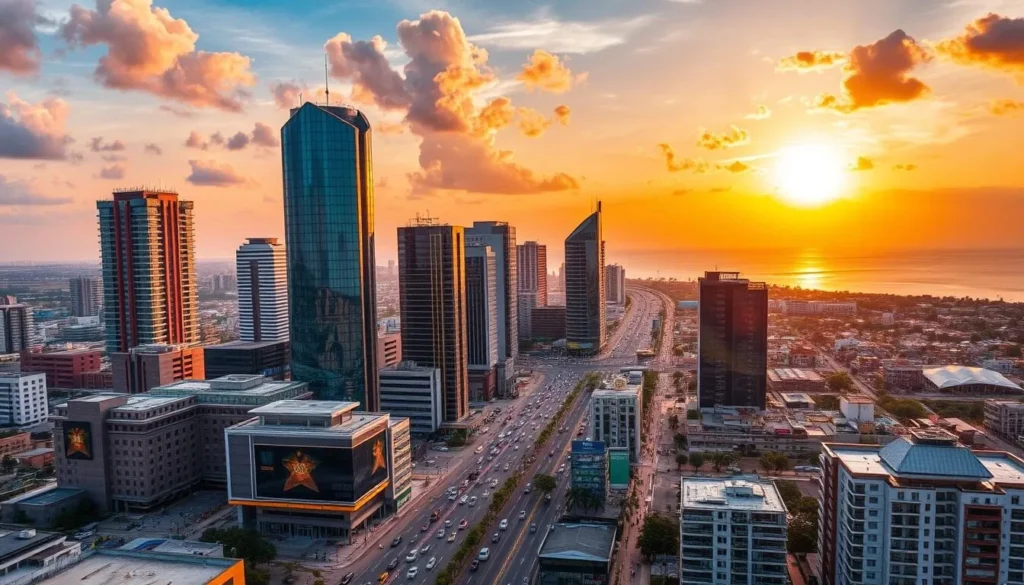
Abidjan is a city of contrasts, where sleek skyscrapers stand alongside vibrant markets and historic landmarks. The city’s diverse neighborhoods, such as Plateau, Cocody, and Treichville, offer a glimpse into the local culture and daily life. From the bustling streets of Abidjan to the serene beauty of the Ébrié Lagoon, there’s no shortage of exciting experiences to be had.
The city’s West African charm is evident in its cuisine, with popular dishes like alloco (fried plantains) and garba (a hearty rice dish) showcasing the local flavors. As you explore Abidjan, you’ll discover a city that’s warm, welcoming, and full of life.
Best Time to Visit and Getting There
The best time to visit Abidjan is during the dry season, from December to April, when you can enjoy comfortable temperatures and minimal rainfall. For your journey to Côte d’Ivoire, you have numerous flight options, including the national carrier Air Côte D’Ivoire and major international airlines like Air France, Emirates, and Ethiopian Airlines.
- You’ll find the best time to visit Abidjan is during the dry season from December to April when you can enjoy comfortable temperatures and minimal rainfall.
- For your journey to Côte d’Ivoire, you have numerous flight options including the national carrier Air Côte D’Ivoire and major international airlines like Air France, Emirates, and Ethiopian Airlines.
- Abidjan’s Felix Houphouët-Boigny International Airport is one of West Africa’s major transportation hubs, making it relatively easy to reach from Europe, the Middle East, and other African countries.
- Once you arrive, you’ll find getting around Abidjan is possible via taxis, shared minibuses called “gbaka,” or water taxis that cross the lagoon.
- If you’re planning to explore beyond Abidjan, consider the timing of your visit to avoid the heavy rainy season when travel to some areas might be challenging.
Explore Abidjan’s Cultural Landmarks
Abidjan, the economic hub of Ivory Coast, is home to a plethora of cultural landmarks that showcase the country’s rich heritage. You’ll find a mix of historical sites, museums, and natural reserves that reflect the city’s diverse identity.
Musée des Civilisations de Côte d’Ivoire

The Musée des Civilisations de Côte d’Ivoire is a treasure trove of the country’s history and culture. As you explore the museum, you’ll gain insights into the various civilizations that have shaped Ivory Coast. The museum’s collections include artifacts, masks, and traditional clothing that highlight the country’s rich cultural diversity.
Parc du Banco Nature Reserve

Take a stroll through the Parc du Banco, a lush nature reserve located in the heart of the city. This 3,000-hectare primary rainforest is a refreshing green oasis in the midst of bustling Abidjan, offering you a chance to escape the city’s energy without traveling far. As you explore the well-maintained hiking trails, you’ll be amazed that such pristine nature exists within city limits, making it one of Africa’s largest urban parks.
You can follow the trails that lead you through dense vegetation where you might spot colorful birds, butterflies, and small mammals in their natural habitat. Be sure to visit the sacred forest area within the park, where you’ll learn about traditional spiritual practices that have protected these trees for generations. For the best experience, consider hiring a local guide who can point out medicinal plants and explain the ecological importance of this urban nature reserve.
Abidjan, Ivory Coast: Best Things to Do – Top Picks
In Abidjan, you’ll discover a vibrant city that’s full of life and energy. From cultural landmarks to exciting nightlife, there’s something for everyone in this bustling economic hub.
Marche de Treichville Market Experience
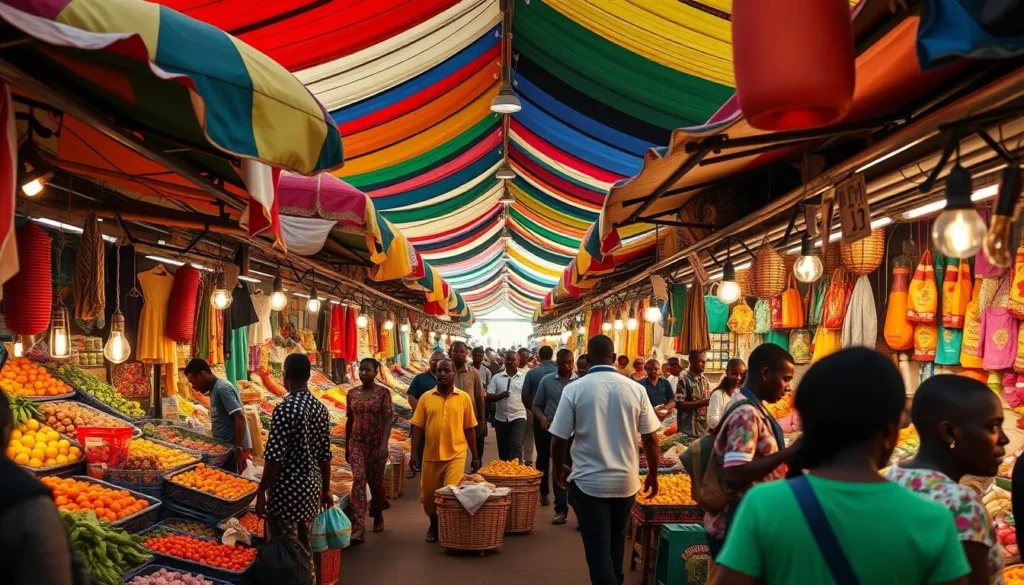
Visiting Marche de Treichville is a must-do experience in Abidjan. This bustling market offers a glimpse into local life, with a wide array of goods on display, from fresh produce to handicrafts. As you navigate through the crowded stalls, you’ll be immersed in the sights and sounds of the city.
Abidjan’s Vibrant Nightlife
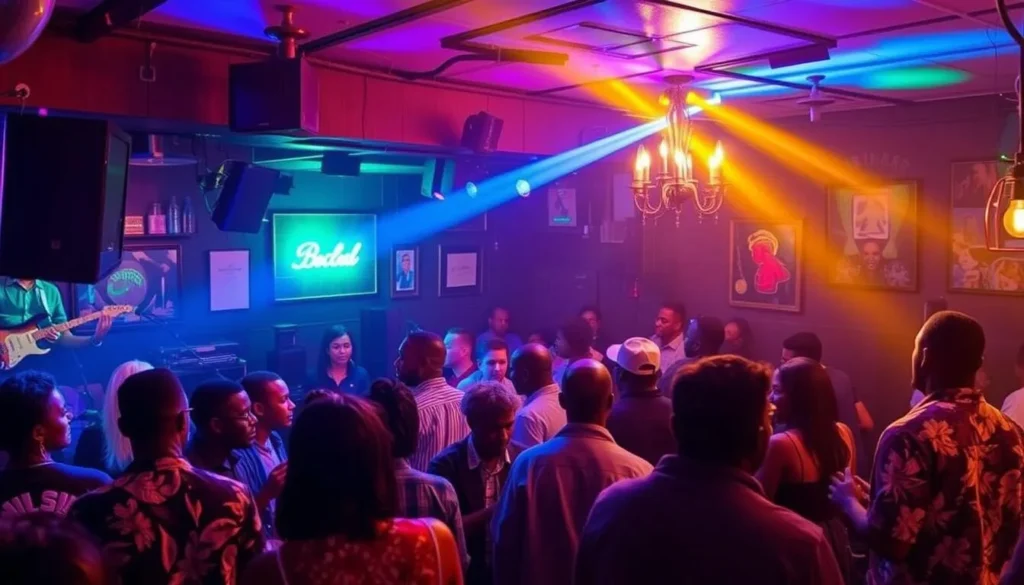
Abidjan’s nightlife is not to be missed. You’ll find that the city comes alive after dark, with a variety of options to suit all tastes. Enjoy a night out at one of the many jazz bars, such as Le Wharf or Le Bridge, and experience the infectious energy of the maquis, where live music keeps patrons dancing until dawn.
- Discover Abidjan’s thriving nightlife scene, which rivals any major city in Africa.
- Explore the upscale neighborhood of Zone4, known for its trendy lounges and clubs.
- Enjoy waterfront bars along the lagoon in Cocody or Bietry for a more relaxed evening.
- Try Babi Dancing or Le Life Star for an authentic Ivorian clubbing experience.
Grand Bassam: UNESCO World Heritage Site
As you step into Grand Bassam, you’re transported to a world where colonial heritage and pristine beaches blend seamlessly. This charming town is a must-visit destination, offering a unique blend of history, culture, and natural beauty.
Colonial Architecture and Historical Significance
Grand Bassam’s colonial past is evident in its well-preserved architecture. The town’s historic district is filled with beautiful examples of French colonial buildings, now a testament to its rich history. As a UNESCO World Heritage Site, Grand Bassam is recognized for its cultural significance, making it a fascinating place to explore.
Pristine Beaches of Grand Bassam
The pristine beaches of Grand Bassam, such as Plage de la Côte d’Argent, offer a perfect spot for swimming and sunbathing. Enjoy fresh seafood at one of the many beachside restaurants, or take a dip in the refreshing waters of the Atlantic Ocean. You’ll find that Grand Bassam’s beaches stretch for miles, providing a serene complement to your cultural exploration.
Some tips for visiting Grand Bassam’s beaches: be aware of strong currents at certain times, and for the best experience, visit during weekdays when the shores are less crowded.
Yamoussoukro: The Political Capital
With its grand architecture and serene atmosphere, Yamoussoukro is a fascinating city to explore. As the official political capital of Côte d’Ivoire, it holds great significance and is home to some of the nation’s most popular landmarks.
Basilica of Our Lady of Peace
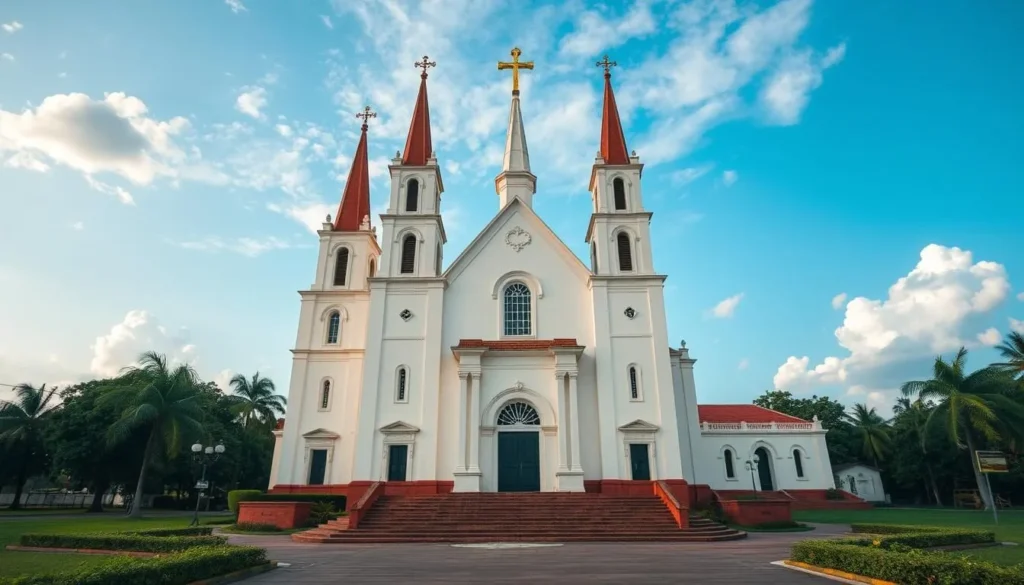
The Basilica of Our Lady of Peace is one of Yamoussoukro’s most iconic landmarks. This magnificent structure is not only a place of worship but also a symbol of the city’s rich history and cultural heritage.
Presidential Palace and Other Landmarks
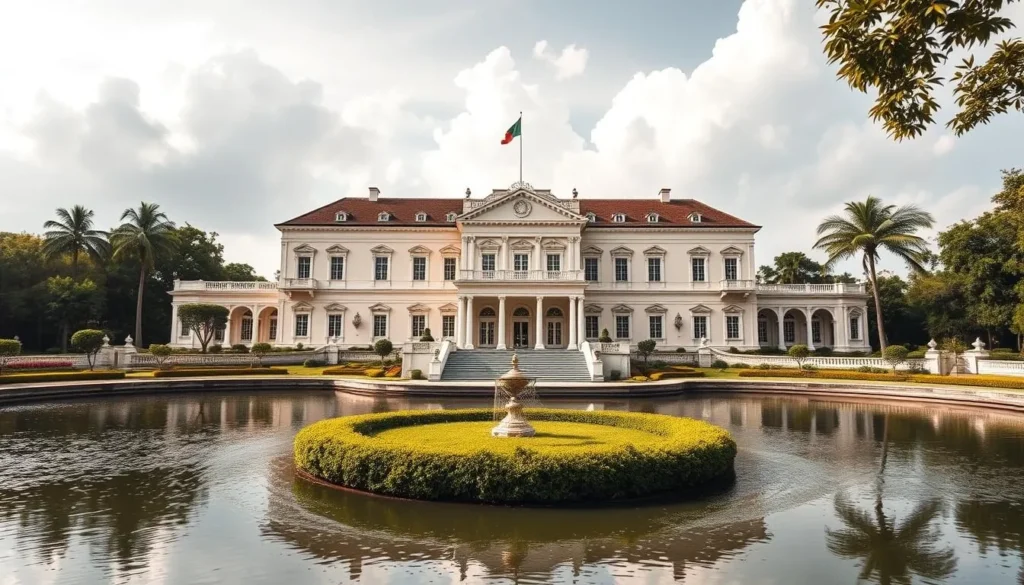
As you tour Yamoussoukro, you’ll come across the Presidential Palace, a grand structure surrounded by a moat reportedly inhabited by sacred crocodiles. Although not open to the public, it is an impressive sight from afar. Other notable attractions include the Fondation Félix Houphouët-Boigny, which promotes peace research, and La Rotonde des Arts, showcasing traditional and contemporary Ivorian art.
Yamoussoukro’s wide, empty boulevards and grand government buildings create an almost surreal atmosphere, distinct from the bustling city of Abidjan. Despite being the official political capital since 1983, many government functions still operate from Abidjan, giving Yamoussoukro the feeling of a planned city that hasn’t quite fulfilled its intended purpose.
Natural Wonders of Ivory Coast
From lush forests to vast savannahs, Ivory Coast’s diverse landscapes are a nature lover’s paradise. The country is home to several national parks and protected areas that are teeming with wildlife.
Tai National Park: Home to Endangered Wildlife
Tai National Park is a haven for endangered species. As one of the last remaining primary rainforests in West Africa, it provides a habitat for a wide range of flora and fauna.
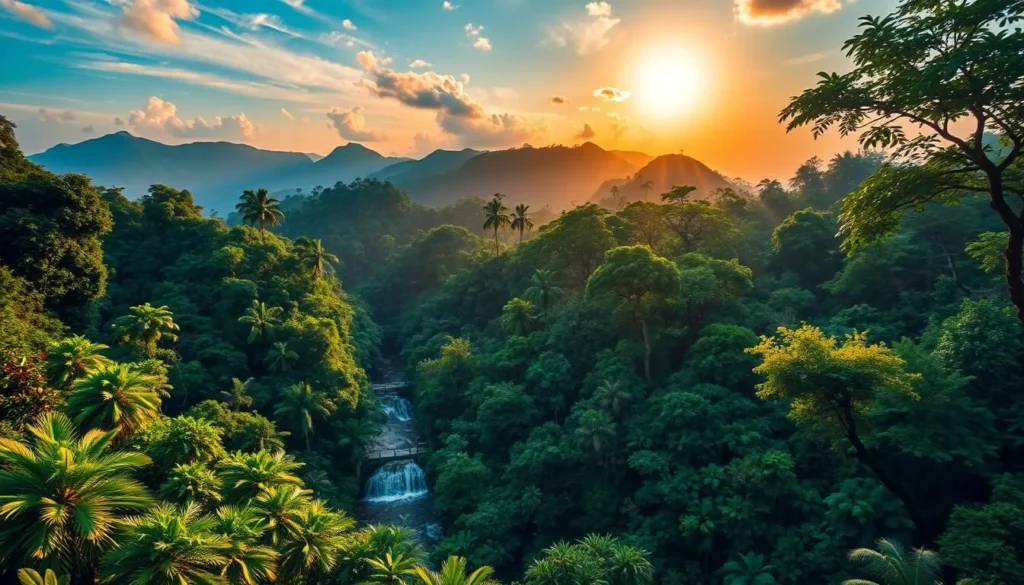
Comoé National Park: West Africa’s Largest Protected Area
Comoé National Park is a vast protected area, covering over 11,500 square kilometers. It is home to a diverse range of ecosystems, including savannahs and dense forests, supporting over 90 species of large mammals.
- You’ll be amazed by the sheer size of Comoé National Park, which at 11,500 square kilometers makes it one of the largest protected areas in West Africa and a UNESCO Biosphere Reserve.
- As you explore this vast wilderness, you’ll encounter an unusual mix of ecosystems where savannah and forest meet, creating diverse habitats that support an extraordinary range of wildlife.
- You should keep your eyes peeled for some of the park’s 135 mammal species, including elephants, buffalo, various antelope species, and if you’re extremely lucky, lions and leopards that still roam these protected lands.
- You’ll want to visit during the dry season (November to April) when animals congregate around the Comoé River and its tributaries, making wildlife viewing more predictable.
- For bird enthusiasts, you’ll be thrilled by the opportunity to spot some of the 500+ bird species that inhabit the park, from ground hornbills to martial eagles and the rare white-breasted guineafowl.

Man: The City of Mountains and Waterfalls
If you’re looking for a mix of natural beauty and cultural richness, Man is the place to be. This city is surrounded by stunning mountains and picturesque waterfalls, making it an ideal destination for nature lovers and cultural enthusiasts alike.
Les Cascades de Man
One of the main attractions in Man is Les Cascades de Man, a breathtaking waterfall that showcases the natural beauty of the region. The waterfall is surrounded by lush vegetation, creating a serene and picturesque environment.
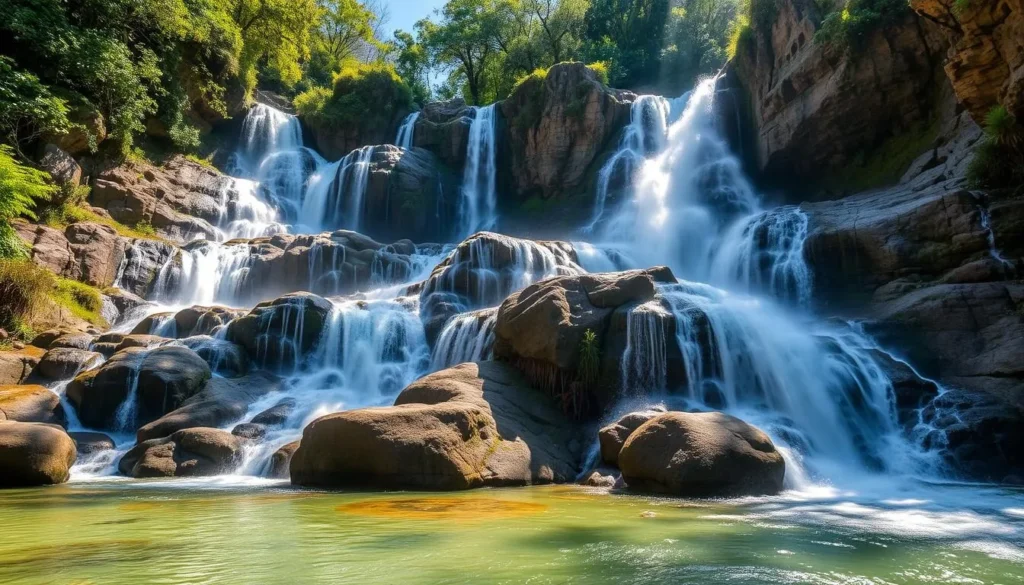
Traditional Villages Around Man
Man is also home to several traditional villages, including the wooden stilted village of Sinfra and the ancient village of Biankouma. As you visit these villages, you’ll have the opportunity to connect with the local Dan and Yacouba people and learn about their customs and traditions, which have remained largely unchanged for generations, preserving their ancestral way of life.
You’ll witness traditional mud-brick architecture and potentially observe cultural practices that are still alive in villages like Gbepleu and Gouessesso. The famous stilt village of Sinfra is a must-visit, with houses built on wooden poles above the water, showcasing a unique architectural adaptation that has become an important cultural symbol of the region.
Visiting these villages offers a chance to gain insight into traditional belief systems, including sacred forests, ancestral worship, and the significance of masks in local ceremonies.
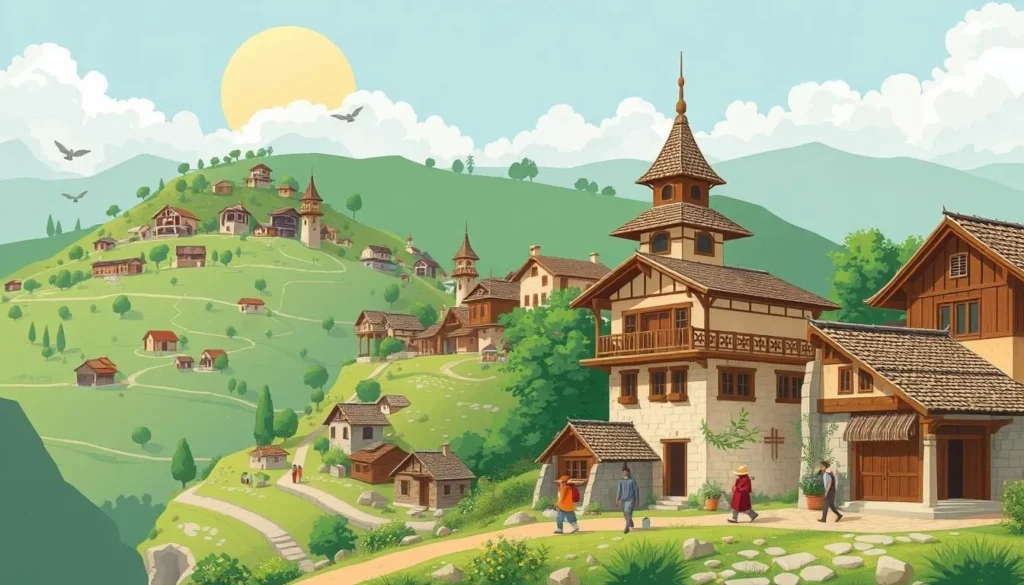
Coastal Getaways in Ivory Coast
Ivory Coast’s coastline is a treasure trove of natural beauty, rich history, and vibrant culture. The country’s coastal towns offer a unique blend of relaxation and cultural experiences that are waiting to be explored.
Assinie: Beach Lover’s Paradise
Assinie is a charming coastal town that boasts stunning beaches and a relaxed atmosphere. Visitors can enjoy swimming, sunbathing, and water sports in a tranquil setting.
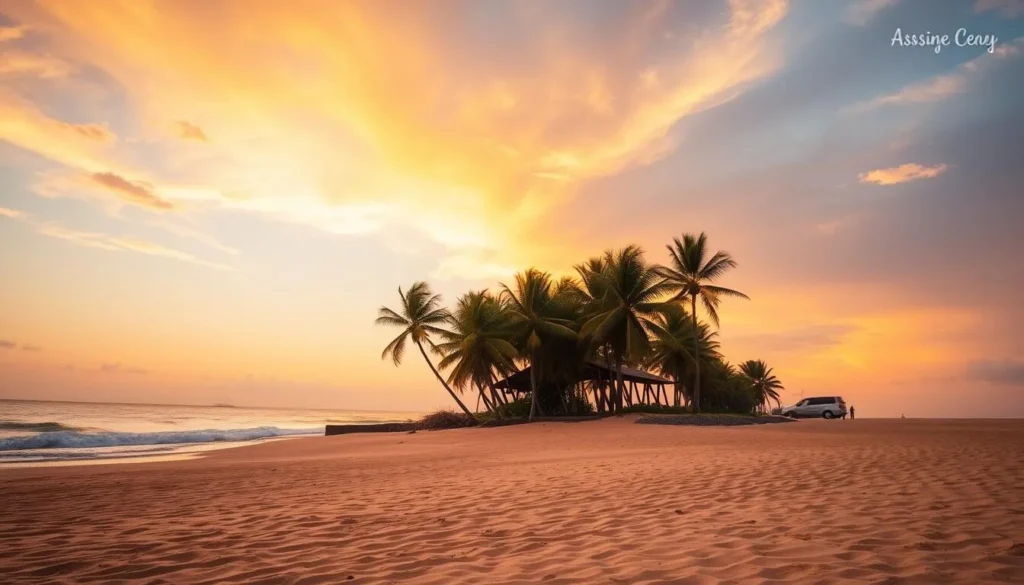
Sassandra: Colonial Charm and Pristine Beaches
The town of Sassandra is a hidden gem that combines natural beauty with a rich historical past. Located on the eastern edge of the Ivory Coast, on a lagoon that flows into the Atlantic Ocean, Sassandra offers a unique experience. Visitors can explore the beaches, including Plages des Boucantiers and Plages des Pêcheurs, and discover the town’s colonial architecture.
- Discover Sassandra’s perfect blend of history and natural beauty.
- Explore the town’s well-preserved colonial buildings.
- Visit the historic lighthouse for panoramic views.
- Enjoy the tranquil beaches, ideal for swimming and sunbathing.
- Spend 2-3 days exploring Sassandra’s historical center and natural attractions.

Korhogo: Immerse in Senufo Culture
Korhogo offers a unique cultural experience, allowing you to dive into the rich Senufo heritage. Visitors can witness traditional ceremonies and performances, such as the Poro society initiation rites and the Guelede mask dance.
Traditional Crafts and Art Galleries

The Senufo people are known for their exceptional craftsmanship. You’ll have the opportunity to explore local art galleries and witness artisans at work, creating beautiful traditional crafts that reflect their culture and way of life.
Cultural Ceremonies and Performances
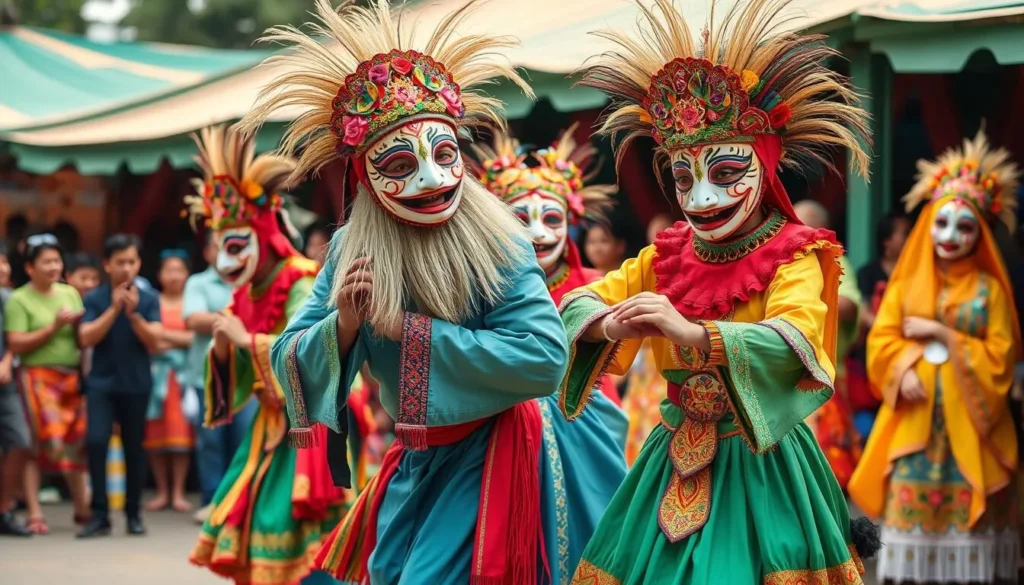
You can witness authentic cultural ceremonies in Korhogo, where the Senufo people maintain strong connections to their traditional spiritual practices. The rhythmic sounds of the balafon and djembe drums accompany many Senufo ceremonies, creating a hypnotic soundtrack to these cultural expressions.
Practical Travel Tips for Visiting Ivory Coast
As you plan your trip to Ivory Coast, it’s essential to be aware of the practical aspects that will make your journey smoother. Understanding the local requirements and tips can greatly enhance your experience in this beautiful country.
Visa Requirements and Health Advisories
Before traveling to Ivory Coast, you should check the visa requirements for your country. Additionally, consult your doctor about any necessary vaccinations and health advisories. Staying informed about local health concerns will help you stay safe during your journey.
Transportation and Safety Tips
Getting around Abidjan is relatively straightforward with options including orange metered taxis, shared “woro-woro” taxis, and water taxis. For long-distance travel, bus companies like UTB and Sotra offer relatively comfortable intercity services. Always negotiate taxi fares before starting your journey and be aware of your surroundings, especially in crowded areas like markets.
- Use official orange taxis in Abidjan when possible.
- Avoid displaying expensive items to minimize the risk of theft.
- Register with your embassy upon arrival in the country.
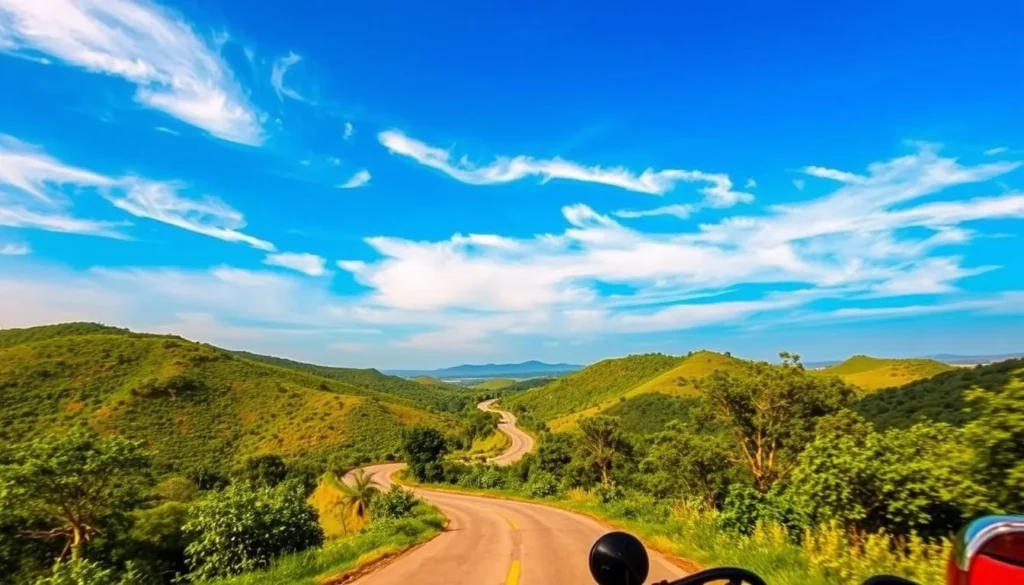
Conclusion
With its rich history, vibrant culture, and stunning landscapes, Ivory Coast is a destination that promises an unforgettable adventure. As you explore this West African nation, you’ll discover a diverse range of top tourist attractions that showcase its natural beauty and cultural heritage.
From the bustling streets of Abidjan to the tranquil beaches of Assinie, you’ll find that Côte d’Ivoire offers a unique blend of experiences. Whether you’re interested in history, culture, or simply relaxing in a beautiful setting, Ivory Coast has something for every traveler.
Now that you’ve learned about the best places to visit in Ivory Coast, it’s time to start planning your trip. With its warm hospitality, delicious cuisine, and unforgettable landscapes, Ivory Coast is sure to leave you with lifelong memories.
The above is subject to change.
Check back often to TRAVEL.COM for the latest travel tips and deals.
